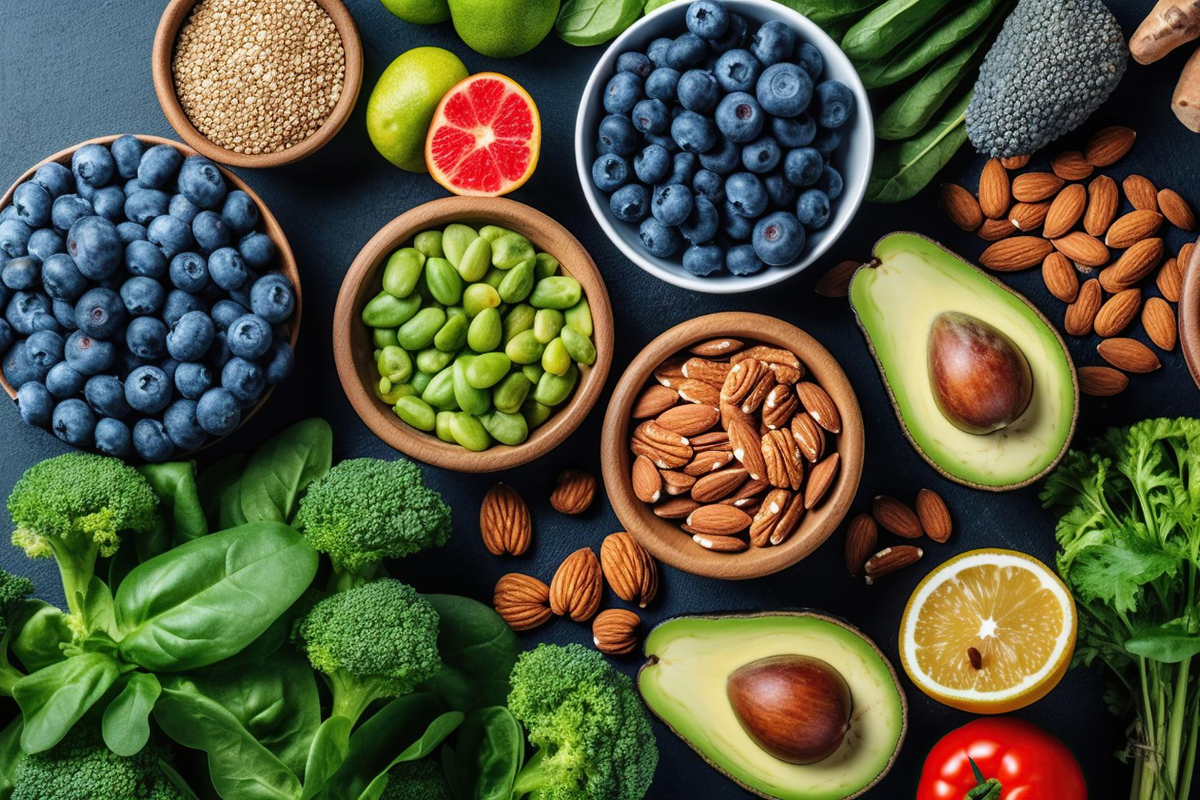
In an era dominated by processed foods and sedentary lifestyles, the paleo diet stands as a beacon, guiding individuals back to the basics of nature to promote overall well-being. This dietary approach, popularized in the 21st century, offers a glimpse into the eating habits of our Paleolithic ancestors. From nutrient-dense whole foods to lean meats, vibrant vegetables, and energy-packed nuts, the paleo diet aims to enhance health and vitality. In this comprehensive rewrite, we delve into the various facets of the paleo diet, exploring its types, health benefits, and providing a detailed meal plan that not only nourishes the body but also tantalizes the taste buds.
Unveiling the Paleo Diet
Principle: The paleo diet revolves around the consumption of whole foods while limiting grains, legumes, and dairy products.
Purpose: Geared towards weight loss, managing blood pressure, and cholesterol levels.
Intended Audience: Tailored for individuals seeking weight loss benefits.
Duration: Typically considered a short-term dietary approach.
Caution for: Pregnant and breastfeeding women and individuals with eating disorders.
Potential Cons: May lead to vitamin and calcium deficiencies.
Decoding the Paleo Diet
Also known as the caveman or Stone Age diet, the paleo diet mirrors the eating habits of our ancestors during the Paleolithic age. The diet emphasizes whole foods that could be hunted or gathered, including fish, lean meats, fruits, vegetables, nuts, and seeds.
Loren Cordain, a health scientist with a Ph.D. in physical education, played a pivotal role in popularizing the paleo diet. His 2001 book, “The Paleo Diet,” trademarked the term and brought this dietary approach into the mainstream.
However, the paleo diet isn’t a one-size-fits-all approach; individuals often tailor it to their specific health goals. Modified versions include:
- Primal Paleo Diet: Permits white rice, dark chocolate, fermented dairy products, raw honey, maple syrup, and certain alcoholic drinks.
- Normal Paleo Diet: Allows dark chocolate, ghee, butter, raw honey, maple syrup, and wine.
- Autoimmune Paleo Diet: An elimination diet identifying foods causing symptoms related to autoimmune diseases.
While the paleo diet offers flexibility, its benefits are worth exploring.
Unveiling the Health Benefits
1. Weight Loss Support
A meta-analysis has indicated that the paleo diet may contribute to weight loss by reducing BMI and waist circumference. Although considered a fad diet, its efficacy may stem from decreased caloric intake.
2. Diabetes Management
The diet’s reduced intake of saturated fatty acids and carbohydrates, coupled with higher protein and healthy fat intake, may enhance glycemic control and reduce postprandial hyperglycemia. Short-term adherence has shown improved insulin sensitivity and lipid profiles.
3. Blood Pressure Reduction
Studies suggest that the paleo diet’s impact on reduced sodium intake and weight loss may lead to lower systolic and diastolic blood pressure. This, in turn, could improve cardiovascular risk factors in individuals with metabolic syndrome.
4. Cholesterol Level Improvement
Research indicates that a grain-free diet may lower total cholesterol, LDL-cholesterol, and triglyceride levels, potentially reducing the risk of heart-related issues.
Despite these advantages, the success of the paleo diet hinges on the selection of appropriate foods.
Crafting a Paleo Diet Meal Plan
Foods to Include:
- Fruits: Apples, plums, peaches, bananas, grapes, citrus fruits, melons, and berries.
- Vegetables: Cauliflower, spinach, cabbage, butternut squash, sweet potatoes, broccoli, Brussels sprouts, and turnips.
- Meat and Seafood: Chicken, beef, salmon, tuna, pork, bacon, cod, and turkey.
- Eggs: Free-range, pastured, or omega-3 enriched eggs.
- Nuts and Seeds: Chia seeds, flax seeds, sunflower seeds, pumpkin seeds, almonds, pine nuts, pistachios, pecans, hazelnuts, Brazil nuts, macadamia nuts, and walnuts.
- Healthy Oils and Fats: Olive oil, walnut oil, coconut oil, flaxseed oil, macadamia oil, and avocado oil.
Foods to Avoid:
- Grains: Wheat, rye, barley, cereal, bread, and pasta.
- Legumes: Beans, lentils, soy flour, peanuts, peas, tofu, and soy milk.
- Dairy: All dairy products, including low-fat milk.
- Refined or Added Sugar: Soft drinks, fruit juices, table sugar, candy, pastries, and ice cream.
- Vegetables: Starchy vegetables like corn, jicama, and white potatoes.
- Vegetable Oils: Soybean oil, safflower oil, grapeseed oil, sunflower oil, cottonseed oil, and corn oil.
- Highly Processed Foods: Chips, cookies, everything labeled “low fat,” or with many additives, including artificial meal replacements.
Now armed with knowledge about the paleo diet, let’s delve into a practical 7-day meal plan to kickstart your journey.
A Week of Paleo Delight
| DAYS | BREAKFAST | LUNCH | DINNER | SNACK |
|---|---|---|---|---|
| Day 1 | Scrambled eggs (3 large eggs) | Chicken salad with olive oil dressing and a handful of nuts | Strips of grilled steak (3 ounces) with spinach salad topped with sunflower seeds | Almond slices and mixed berries |
| Day 2 | Banana, avocado, kale, and apple smoothie (Almond milk) | Chicken salad (1 cup) and grapes (1 cup) | Baked salmon (6 ounces) with steamed asparagus spears (6) | Slices of citrus fruit with herbal tea |
| Day 3 | Pancakes (1 serving) | Mixed salad with tuna, pumpkin seeds, olive oil, and boiled eggs (1 bowl) | Beef stir-fry (4 ounces) cooked in coconut oil (2 tablespoons) | Warm almond milk with cashews (1 ounce) |
| Day 4 | Bacon slices (3) with scrambled eggs (3 eggs) and orange (1) | Chicken and vegetable soup (2 servings) with 15 grain-free crackers | Fried pork (4 ounces) with steamed kale, broccoli, and spinach | Beef jerky (3 ounces) |
| Day 5 | Hard-boiled eggs (3) with sliced carrots (1 cup) | Mixed salad greens (2 cups) | Stir-fried ground beef (4 ounces) with vegetables and berries (1 cup) | Walnuts and mixed berries |
| Day 6 | Smoothie (Spinach, mixed berries, and coconut milk) | Baked salmon (4 ounces) with roasted butternut squash and asparagus spears (6) | Mixed vegetable and chicken soup with turmeric (2 servings) | Roasted pumpkin seeds and almonds with herbal tea (1 cup) |
| Day 7 | Roasted sweet potatoes with apple slices and cinnamon (1 cup) | Mixed salad with turkey, seeds, avocado, and olive oil (1 bowl) | Grilled lamb (4 ounces) with roasted Brussels sprouts and spaghetti squash | Herbal tea with mixed berries and walnuts (1 cup) |
Quick Tip: Enhance the flavor of nuts and seeds with spices like garlic powder and cumin to satisfy salt cravings.
This meticulously crafted meal plan serves as a valuable resource for both beginners and those aiming for weight loss. However, the paleo diet isn’t the only option available. In the next section, we explore the differences between the paleo and keto diets.
Paleo Diet vs. Keto Diet: Deciphering Distinctions
While the paleo and keto diets share a common emphasis on whole, unprocessed foods, they differ in significant ways.
Paleo Diet:
- Allows natural, grass-fed, and unprocessed meat.
- Permits raw honey, maple syrup, date sugar, and coconut sugar.
- Allows starchy vegetables in moderation.
- Permits fruits and high-sugar fruits in moderation.
- Does not allow dairy products.
- Does not allow artificial sweeteners.
Keto Diet:
- Allows any meat without added sugar or carbohydrates.
- Permits some artificial sweeteners like stevia and sucralose.
- Does not allow starchy vegetables.
- Allows only lower-sugar fruits.
- Allows sugar-free dairy.
While both diets contribute to weight loss and overall health improvement, it’s crucial to understand potential risks before embarking on any dietary journey.
Navigating the Risks of the Paleo Diet
Despite its numerous benefits, the paleo diet poses potential risks:
- Nutrient Deficiencies: The exclusion of grains and starchy vegetables may lead to nutrient deficiencies, particularly in fiber and essential nutrients.
- Calcium and Vitamin D Deficiencies: Eliminating dairy products may result in deficiencies of calcium and vitamin D, potentially affecting bone density and increasing the risk of osteoporosis, especially in menopausal individuals.
- Sustainability Concerns: The paleo diet’s restrictive nature may pose challenges for long-term adherence. Individuals with underlying health conditions, such as heart, kidney, liver, or pancreatic issues, should consult with a physician or registered dietitian before embarking on this dietary approach.
In conclusion, the paleo diet offers a holistic approach to nutrition, emphasizing whole, unprocessed foods that align with the dietary patterns of our ancestors. Its potential benefits include weight loss, improved blood sugar control, and reduced blood pressure. However, long-term adherence to this restrictive diet may lead to nutrient deficiencies. Individuals can either fully embrace its principles or tailor them to align with individual health goals. Consulting with a registered dietitian is advisable, especially for those with underlying health conditions.









